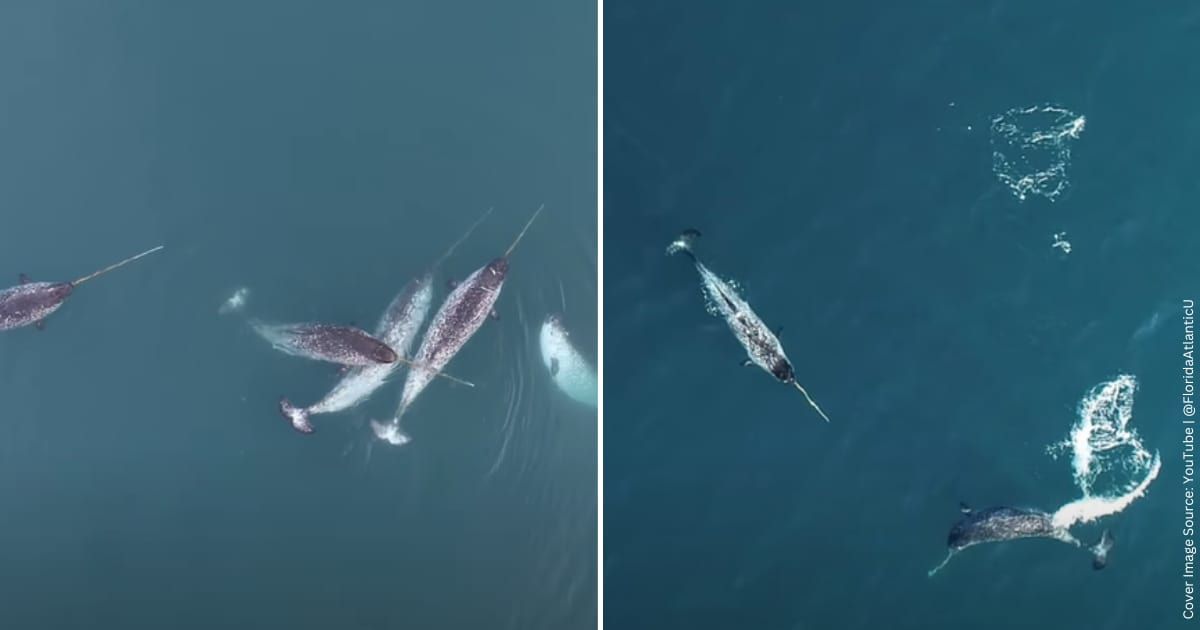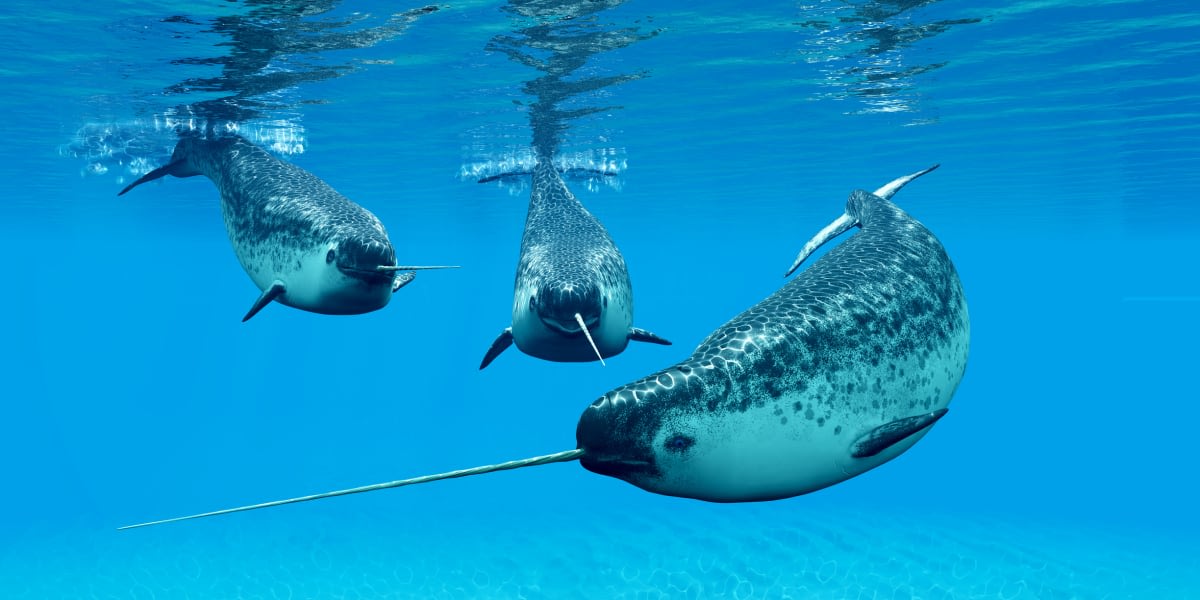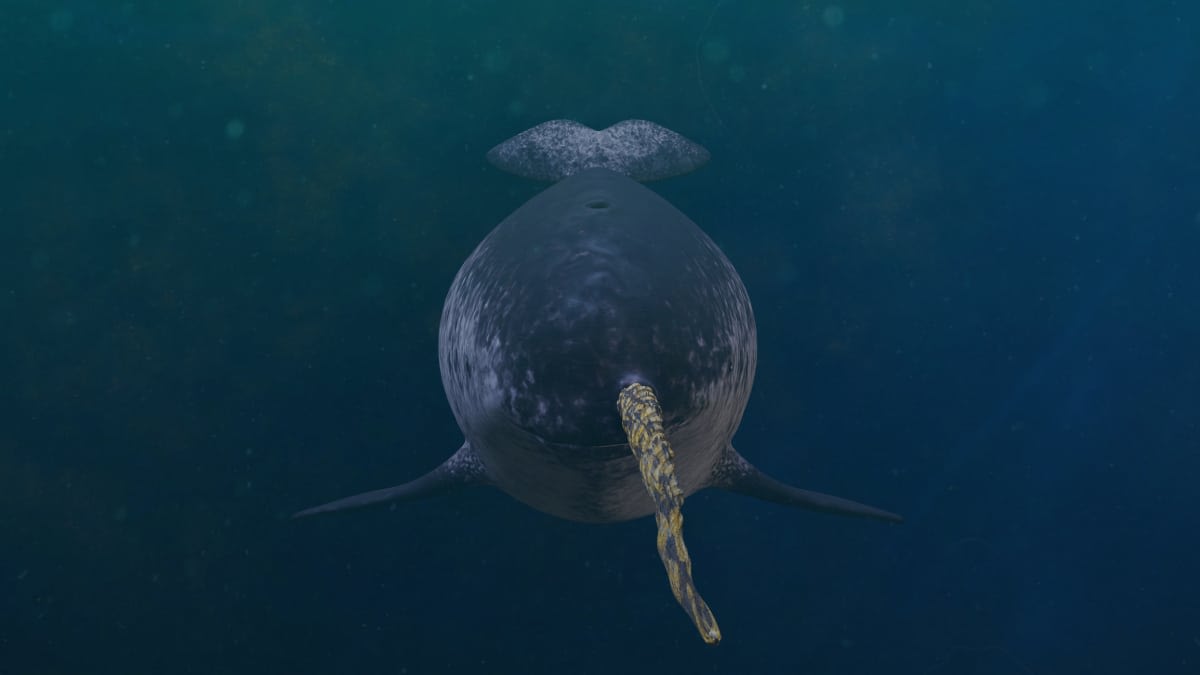Stunning Drone Video Captures The ‘Unicorn of the Sea’ Engaging in Playful Behavior

When a scientist ventures out into the icy waters of the Arctic and notices two narwhals crossing and clanging their long, spiraling tusks with each other, they instinctively know that they should step aside. A fierce competition is going on. Narwhals, the mottled silver-grey cousins of bottlenose dolphins, are elusive, mysterious residents of the Arctic. Dubbed “corpse whales,” they are infamous for their protruding tooth-like tusks that they manipulate for a variety of behaviors. In a study published in Frontiers of Marine Science, scientists utilized drone footage to reveal the first-ever evidence that these tusks are employed for something other than these “tusking” behaviors: play.

The tusks of narwhals tell the entire tale of their history and evolution. Despite being their only tooth, narwhals don’t use it for chewing their prey. The prey is rather sucked up directly into the mouth. The tusks, which have earned these creatures the title “unicorns of the sea,” can grow up to 10 feet. From previous studies, scientists knew that this giant tooth was likely used for the typical “tusking” behaviors, including sexual selection. Females prefer the males with long tusks. In this study, the researchers from Florida Atlantic University’s Harbor Branch Oceanographic Institute, and Canada’s Department of Fisheries and Oceans, in partnership with Inuit communities in Nunavut in Canada’s High Arctic, tracked the movements of some narwhal tusks in the Arctic waters.
Watch the video here.
The drone footage they captured from above revealed insights into a bonus function that the tusks play for the Arctic-dwelling mammals. The footage revealed that narwhals also use their tusks for exploratory-object play activities, as well as for “kleptoparasitism,” a “food thief” situation, among narwhals and glaucous seagulls, according to the description. The video also provided evidence of narwhals using their tusks in the wild to investigate, manipulate, and influence the behavior of Arctic char, a species of fish. Many were found to be using vigorous force with their tusks to stun and kill the fish.

The footage, shared by the university, displays a pod of five to six narwhals gliding through the ripples on the surface, with white seagulls emerging on the screen from time to time. The narwhals are seeking a plump char who is swimming nearby. While chasing the fish, one narwhal keeps on hitting the sides of its body with its tusk. The fish rushes towards another direction, but is forced to return to the same spot. This time, another narwhal starts chasing it, pecking it with its tusk. By the end, the narwhals succeed in trapping the fish, but they don’t eat it yet, indicating that the play could merely be an entertainment. "I have been studying narwhal for over a decade and have always marveled at their tusks," University of Manitoba ecologist Cortney Watt said in a press release.

"To observe them using their tusks for foraging and play is remarkable." As Watt pointed out, the drone footage revealed that apart from the raucous competition and foraging battles, narwhal tusks have a sensitive side too. "Narwhals are known for their 'tusking' behavior, where two or more of them simultaneously raise their tusks almost vertically out of the water, crossing them in what may be a ritualistic behavior to assess a potential opponent's qualities or to display those qualities to potential mates," Florida Atlantic University ecologist Greg O'Corry-Crowe explained in the press release.

Today, as the Arctic ice drifts away due to global warming, these narwhals stand on the cliff edge of starvation and the threat posed by polar bears who patrol the breathing holes, hunting them. "Drones provide a unique, real-time view of their behavior, helping scientists gather crucial data on how narwhals are responding to shifts in ice patterns, prey availability, and other environmental changes," said O'Corry-Crowe.
More on Green Matters
Chilling Footage Shows a Pod of Orcas Ambushing a Blue Whale Using a Never-Before-Seen Tactic
Experts Stunned After Noticing Killer Whales Preying on Great White Sharks In Rare Footage
Scientists Track Two Great White Sharks During Migration — and Noticed Never-Before-Seen Behavior